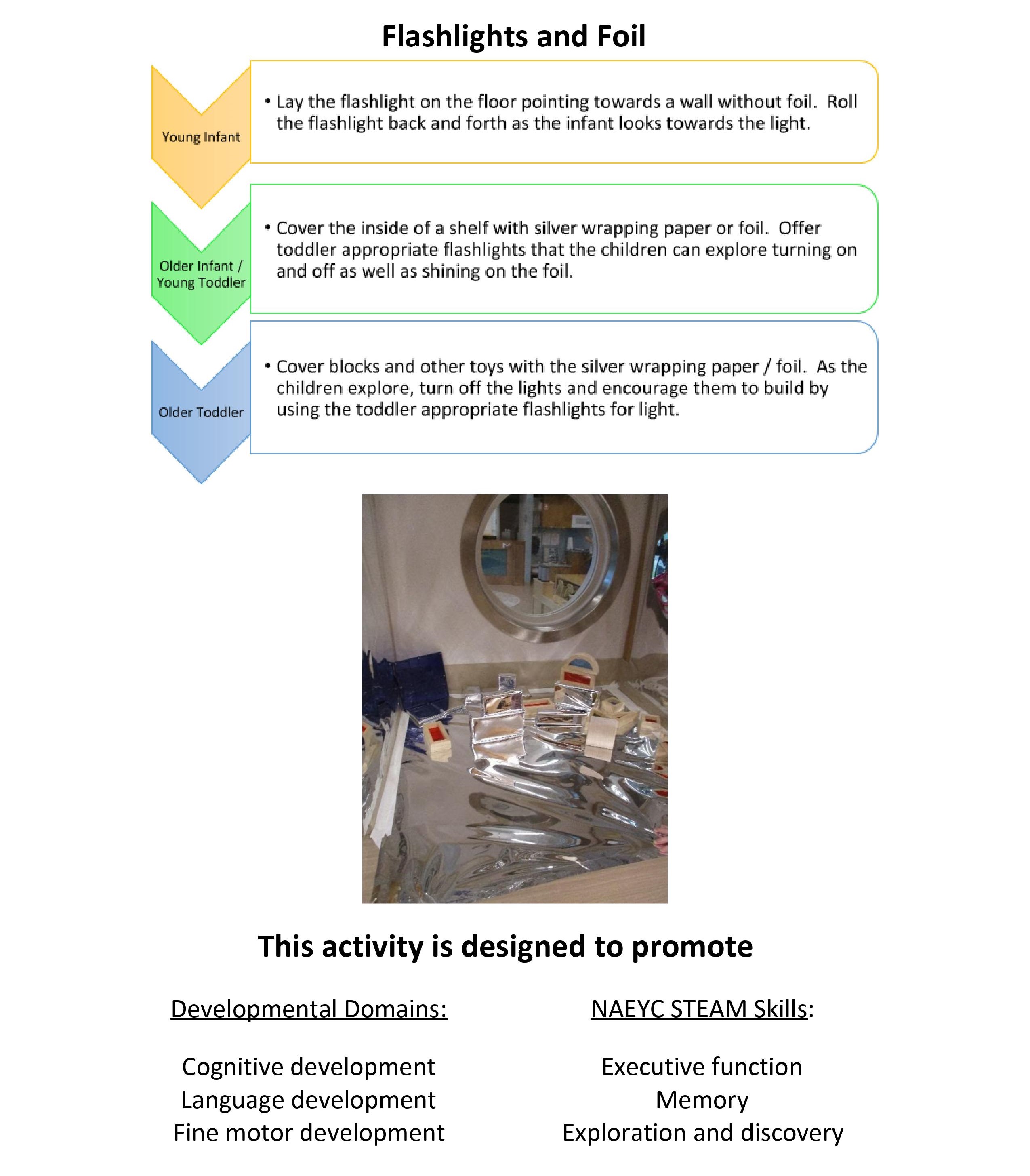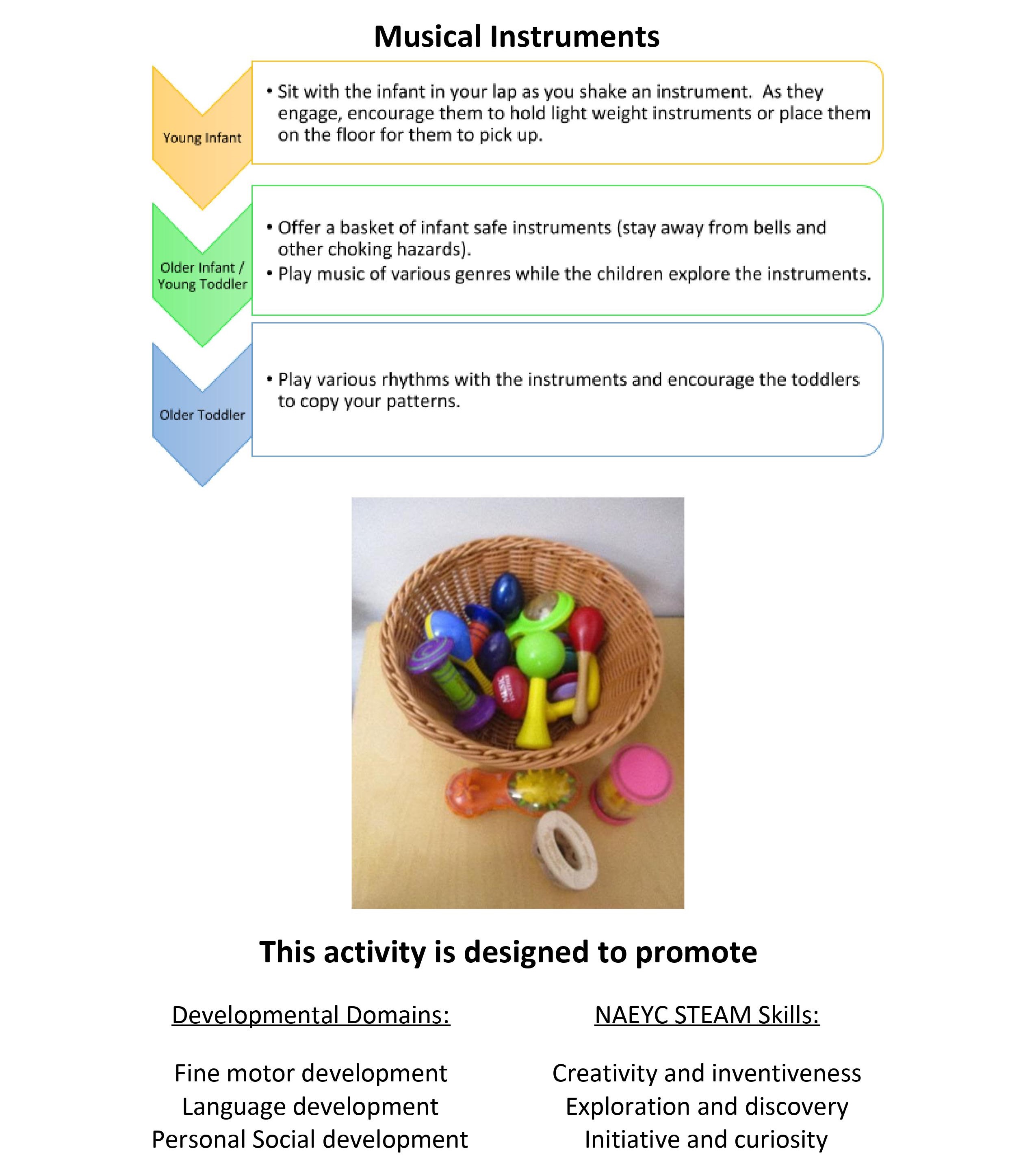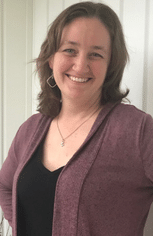Infant/Toddler STEM Activities

How To Bring STEM/STEAM into the Infant/Toddler Classroom
Nothing is as constant as change. This is something my dad used to say to my sisters and me when we were little. The same is true for early childhood curriculum; things are always changing. This is a good thing! With change comes forward movement as we continually better ourselves for the sake of the children and families we are working with.
One of the most important parts of best practice is reflection and change based on reflection. Lately I’ve been reflecting a lot on the concepts around STEAM/STEM and how they can be brought into the infant/toddler classroom in a developmentally appropriate way.
To get to the how, it is helpful to understand where it all started.
In the early 2000s, the acronym STEM was introduced in the United States. Recognition of the importance of Science, Technology, Engineering and Math took off. The focus of these programs was on children in grades K-12. Then in 2006 STEAM was introduced by Georgette Yakman. The importance of practical application through art and design was recognized and the acronym changed to include Art. Again, the focus was on grades K-12.
STEAM is more than just teaching a science lesson or a math activity. It boils down to cognitive abilities for early childhood. This concept is pretty abstract and took some time for that to be recognized.
So, what's the big deal and when did the early childhood community catch on? NAEYC published their first book on STEM in 2015. People were becoming more aware of how to implement these content areas in their preschool classrooms with great success. The focus to this day continues to be on STEM and STEAM in the preschool classroom. We are still a bit behind the trend when it comes to infants and toddlers.
For infants and toddlers, it is natural to think about how you might incorporate numbers, letters, art experiences, and science experiments to promote STEAM concepts. However, these ideas are not appropriate for most infants and toddlers. These ideas are what I call “toddler academics”.
I'm here to tell you that for a child to be able to engage in these types of activities, they have to have a foundation for how to learn first.
Families want to see that you are "teaching" their child something and most of the time if someone can say that their two-year-old knows their alphabet or can count to 10, they feel they have succeeded. This is impressive on the surface, but does the child know how to engage with new materials? Can they persist through a problem?
The entire goal for infant/toddler programming when it comes to STEAM concepts should be to promote curiosity, problem solving, exploration, flexibility, and resilience. This is done by using small moments during the day and through play. Supporting children as they develop these skills and more encourages higher order thinking skills as they continue to learn.
Two STEAM Activity Ideas for Infants & Toddlers
Flashlights and Foil
Flashlights and foil wrapping paper along with Rainbow blocks are a great place to start!

Music, Music, Music
Instruments are a low supervision activity you can use with infants and toddlers. Be aware of which instruments you choose for safety reasons!

One last note: Anytime you can put materials that you are using in a basket for open exploration you have opened up a whole other world for engaging in STEAM concepts with infants and toddlers. One of the most important skills is fostering a sense of curiosity. By offering baskets you will naturally promote curiosity.
Think about it. What else can you do to move towards infant/toddler STEAM concepts that will teach a child how to learn rather than what to learn?
 Julie Sizemore is the creator of RESPECT Care Teaching. A wife and mother of two children, she has been in the field of early childhood education since 1999 in many different capacities from home-based childcare, to center based child care, after school programs, home visiting, and a community liaison. Currently, she works full time as a lab instructor at the Phyllis Fratzke Early Childhood Learning Laboratory (ECLL) on campus at Grand Rapids Community College, working in the 0-3 Early Head Start Classroom. In the evening and on weekends, she provides in person and online training focused on infants and toddlers for the early childhood community. Julie is a fierce advocate for treating infants and toddlers with respect and educating people on developmentally appropriate practices.
Julie Sizemore is the creator of RESPECT Care Teaching. A wife and mother of two children, she has been in the field of early childhood education since 1999 in many different capacities from home-based childcare, to center based child care, after school programs, home visiting, and a community liaison. Currently, she works full time as a lab instructor at the Phyllis Fratzke Early Childhood Learning Laboratory (ECLL) on campus at Grand Rapids Community College, working in the 0-3 Early Head Start Classroom. In the evening and on weekends, she provides in person and online training focused on infants and toddlers for the early childhood community. Julie is a fierce advocate for treating infants and toddlers with respect and educating people on developmentally appropriate practices.
